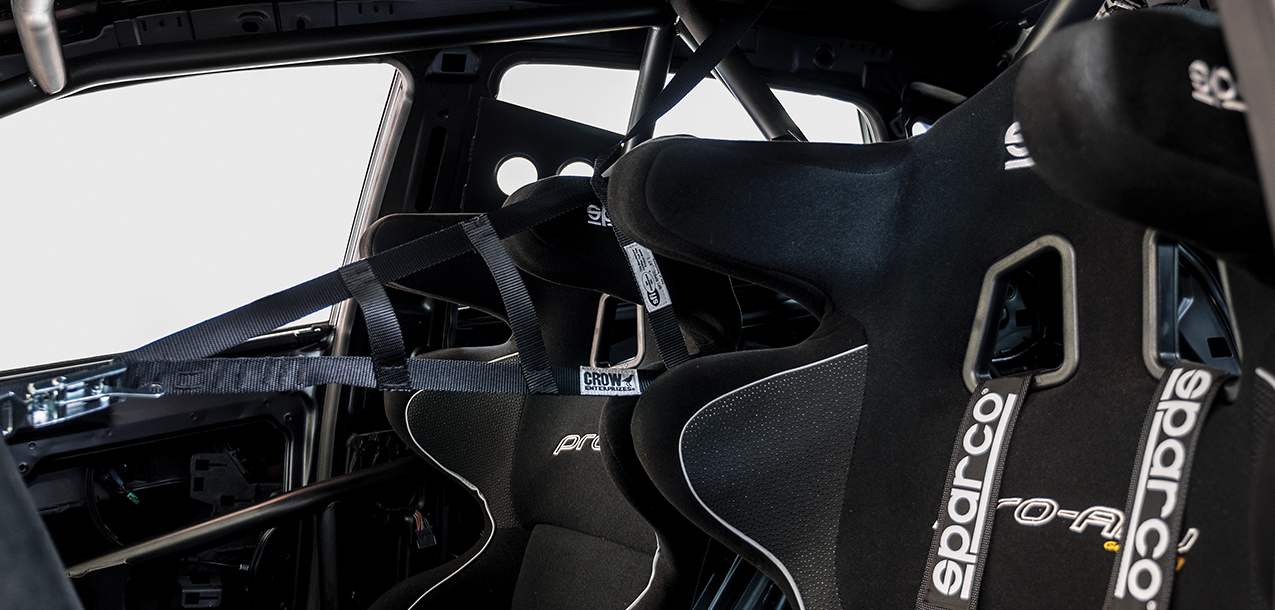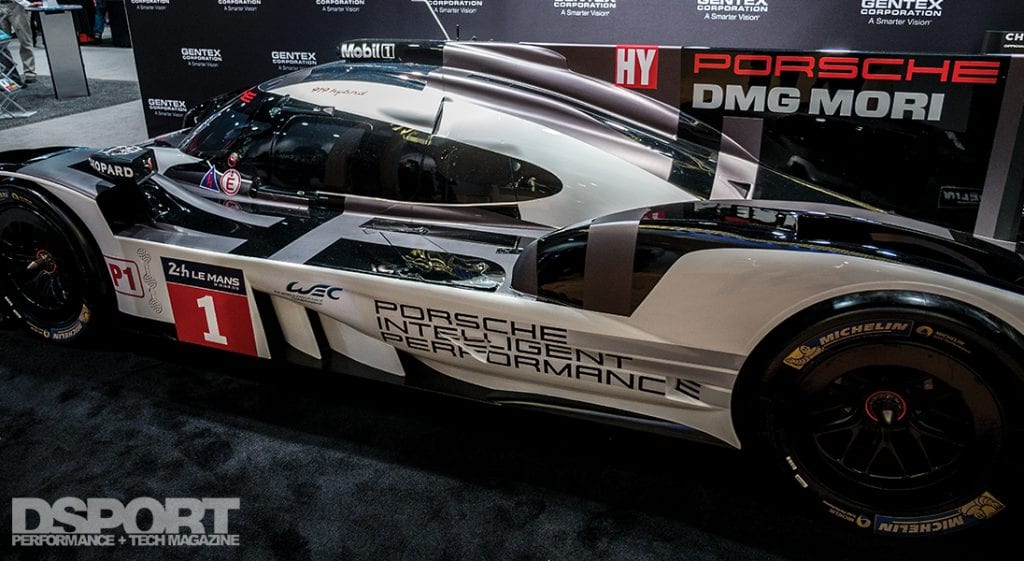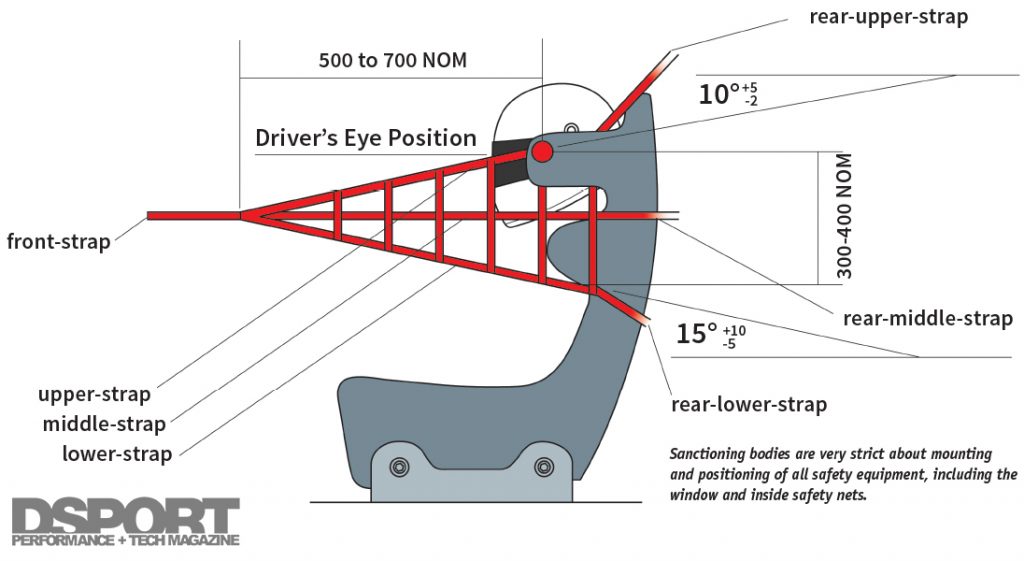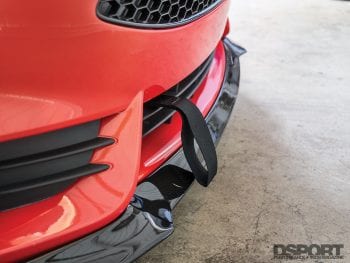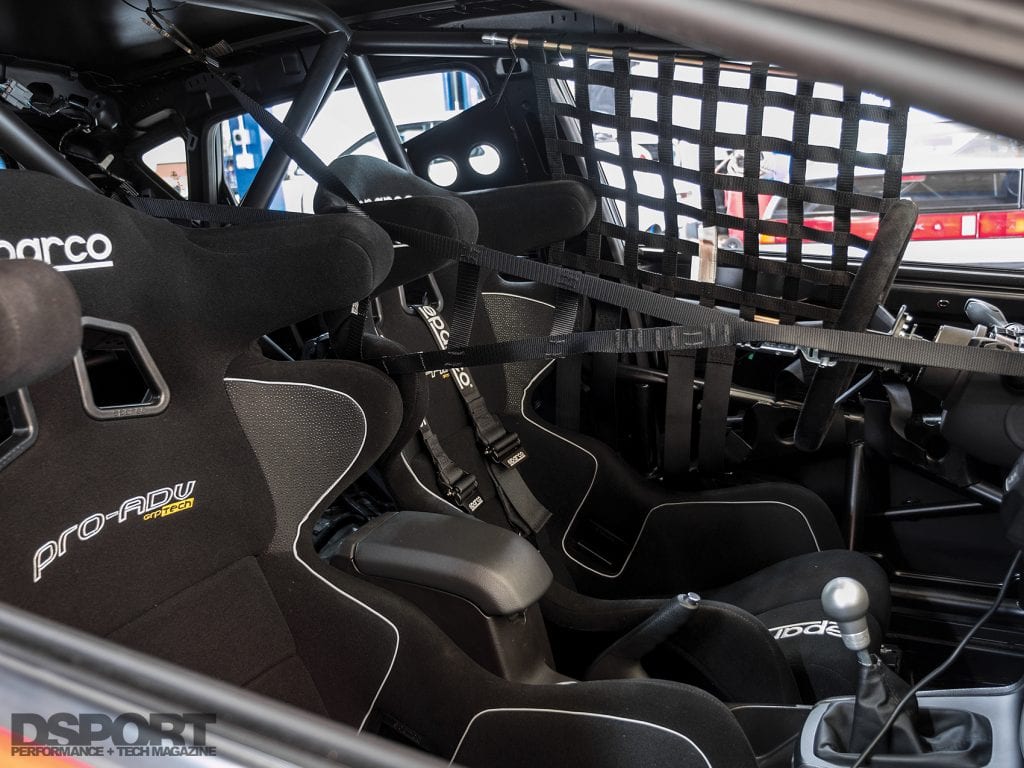Many racing sanctioning bodies require drivers to be able to exit a stopped car in only seven seconds in the case of an emergency. This may not sound like a long time, but it can feel like forever when flames fill the vehicle cabin. All the while, the driver must shut off the car, cut the power, engage the fire suppression system, release the six-point harness, remove the steering wheel, unhook the window net and open the door to get out. Each of these items play a key role in keeping a driver safe in different ways, while allowing them to exit the car quickly under their own power. Racecar safety has made huge strides since the early days of motorsports, enabling drivers to not only survive major crashes but to walk away from them unscathed. If you plan to put your car on a drag strip, a race course, or any other type of competitive or high speed environment, there’s no excuse to skip out on the equipment that could potentially save your life.
Text by Cameron Parsons // Photos by Cameron Parsons and Joe Singleton
DSPORT Issue #175
Safety Seminar
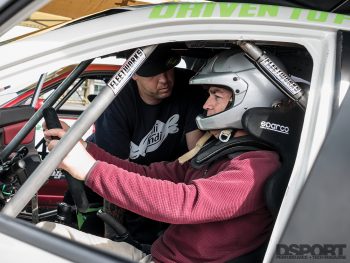 Many racecar components like bucket seats, removable steering wheels, harnesses and electrical cutoff switches too often serve as decorative pieces of flair in show cars that never see the track. Although this safety hardware can earn you some aesthetic points, its original purpose is for actual function and safety. Many racing organizations and sanctioning bodies are very strict about what is and what is not allowed on track, whether you’re joining in on a track day for fun, making runs down the drag strip, or racing wheel-to-wheel with a field of cars. If you plan to take part in any driving activity at a racing facility, you’ll need to get caught up with the rules and requirements. When it comes down to mandatory parts, selecting the best components for the job can deliver numerous benefits, topped off with protecting you in case of an incident.
Many racecar components like bucket seats, removable steering wheels, harnesses and electrical cutoff switches too often serve as decorative pieces of flair in show cars that never see the track. Although this safety hardware can earn you some aesthetic points, its original purpose is for actual function and safety. Many racing organizations and sanctioning bodies are very strict about what is and what is not allowed on track, whether you’re joining in on a track day for fun, making runs down the drag strip, or racing wheel-to-wheel with a field of cars. If you plan to take part in any driving activity at a racing facility, you’ll need to get caught up with the rules and requirements. When it comes down to mandatory parts, selecting the best components for the job can deliver numerous benefits, topped off with protecting you in case of an incident.
Who Makes the Rules?
In nearly any type of motorsport, the safety requirements are set by the SFI Foundation (initially named after SEMA Foundation Inc, of which the organization is now completely separate) and/or the Federation Internationale de l’Automobile (FIA). Both of these long- organizations are globally recognized as the official administrators for safety standards when it comes to requirements, testing and implementation in the rules. If you choose to compete or even set a wheel on track for practice and testing, there’s a good chance that your safety gear must be SFI or FIA certified, or both.
Seats
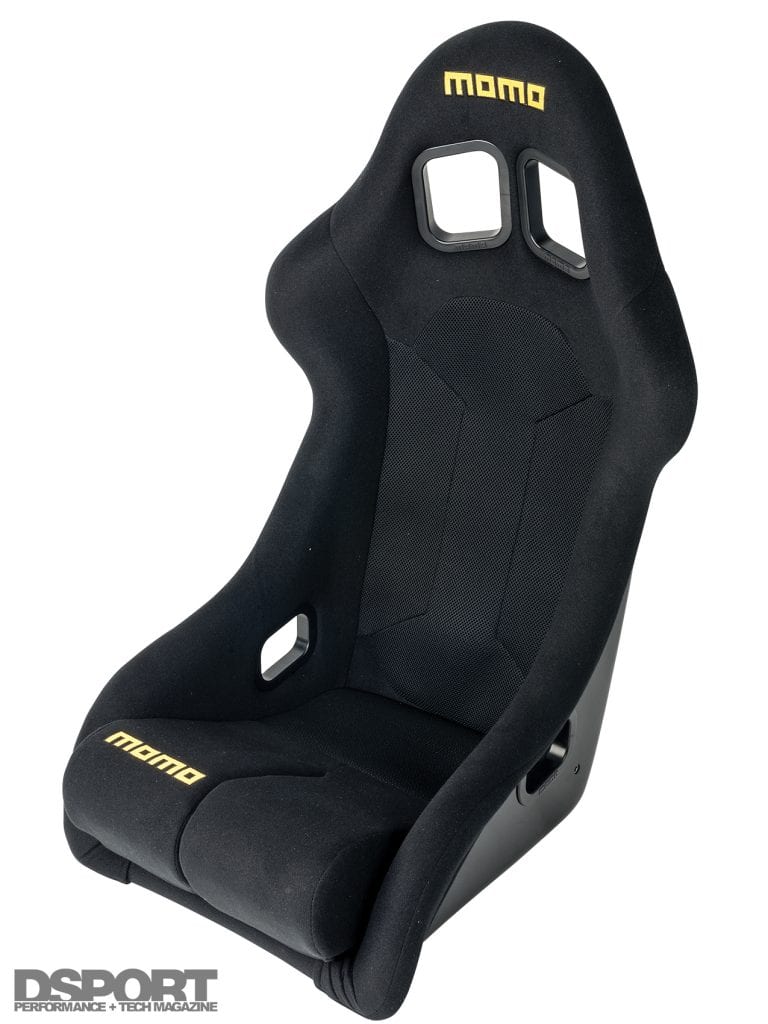 Racecar safety starts with where the driver sits. The seat may not sound like a highly detailed and functional piece of hardware, but racing seats in particular are designed to meet very strict requirements. To this end, you can’t simply throw any lightweight bucket seat in your car and deem it safe. In the event of a rollover in your streetcar where the roof gets crushed in, the factory seats are designed to fold backwards in a horizontal position, protecting the occupants. With fixed-back bucket seats that won’t give way, the occupants’ heads stand as the highest objects inside the car, which is definitely not a good thing when the roof comes down. In order to better protect yourself, only utilize racing seats if you are going to also install additional rollover protection like a roll bar or cage. Otherwise, the factory seats will often serve as the safer option.
Racecar safety starts with where the driver sits. The seat may not sound like a highly detailed and functional piece of hardware, but racing seats in particular are designed to meet very strict requirements. To this end, you can’t simply throw any lightweight bucket seat in your car and deem it safe. In the event of a rollover in your streetcar where the roof gets crushed in, the factory seats are designed to fold backwards in a horizontal position, protecting the occupants. With fixed-back bucket seats that won’t give way, the occupants’ heads stand as the highest objects inside the car, which is definitely not a good thing when the roof comes down. In order to better protect yourself, only utilize racing seats if you are going to also install additional rollover protection like a roll bar or cage. Otherwise, the factory seats will often serve as the safer option.
Most race-legal seats at minimum provide additional lateral support from the thighs all the ways up to the shoulders for protection.
Racing seats are manufactured from fiberglass or carbon fiber, providing their own benefits in weight and strength. In order to pass the stringent FIA and SFI homologations, race-legal seats must follow specific build designs to protect the driver from impacts, whiplash and to an extent, fire. For example, the seats must withstand 200 lbs. of rearward force and be covered in approved fire-retardant material. Observe different seat designs and you’ll find various methods of driver support. Most racing seats share a high-sided design that extends above the drivers’ waist and legs. Many of the more robust designs (for high speed road racing and rally) also implement additional shoulder and helmet support on both sides, preventing any portion of the body from swinging sideways out of the seat. This design may feel inconvenient when it comes to getting in and out of the car, but it reduces the risks of broken bones or even a broken neck and spine from excessive lateral movement. With the seat properly mounted to fixed points on the floor (and permanently fixed without the ability to slide forward or back, as required by some sanctioning bodies), the belts handle the remaining duties of securing the occupants from floating about the cabin.
Mounting Positions
Racing organizations can be very strict about how your harnesses are mounted, and not without good reason. A severe impact puts the driver through sudden high forces, pulling them against the belts that must keep them safe in the seat. To this end, the belts must mount to sturdy locations. Most organizations no longer allow mounting to seats or their supports, but to solid fixed points on the floor and to a harness bar with three-bar adjusters.
Restraints
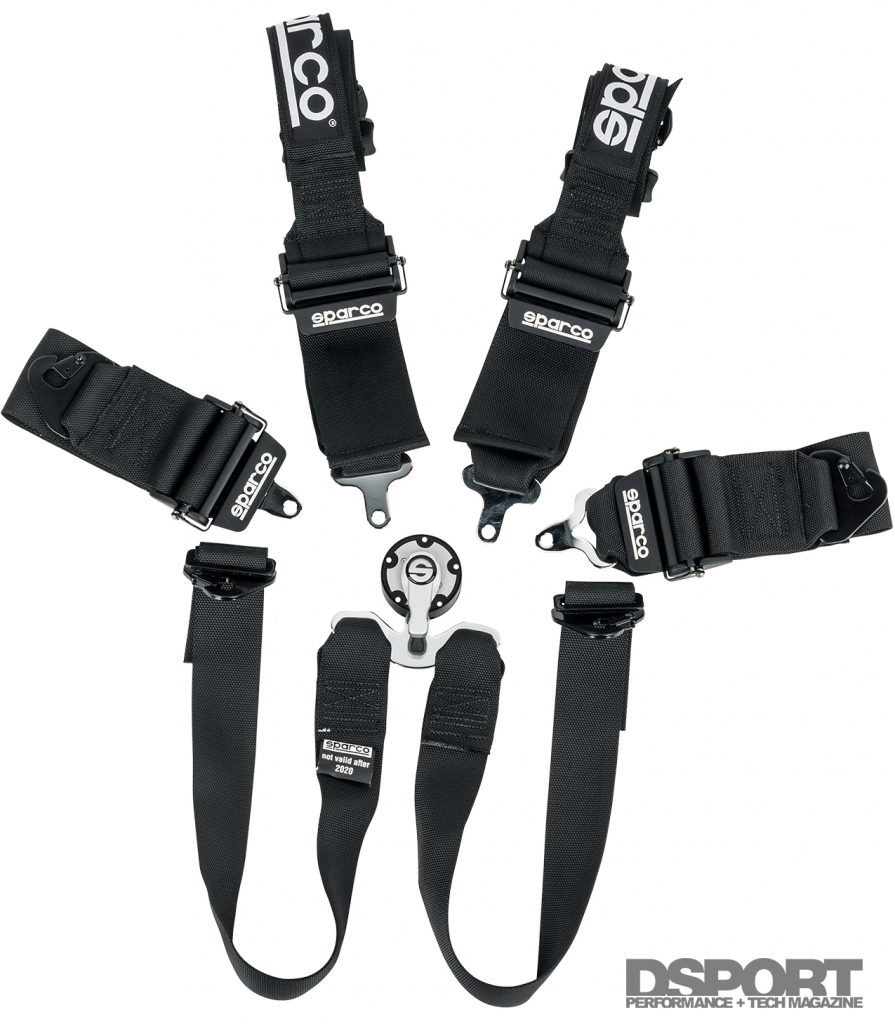 The job of the seatbelts in your car is obvious, but why are there so many different types? It largely depends on the application. Nearly every modern car comes from the factory with a standard three-point setup, with one attachment to the B-pillar for the belt to rest over the driver’s chest and shoulder, and one attachment on either side of the waist. These locations cover the general directions of movement in case of an accident. Although this passes the minimum requirements for most track days and autocrosses, racing harnesses can secure and protect the driver to a much higher standard.
The job of the seatbelts in your car is obvious, but why are there so many different types? It largely depends on the application. Nearly every modern car comes from the factory with a standard three-point setup, with one attachment to the B-pillar for the belt to rest over the driver’s chest and shoulder, and one attachment on either side of the waist. These locations cover the general directions of movement in case of an accident. Although this passes the minimum requirements for most track days and autocrosses, racing harnesses can secure and protect the driver to a much higher standard.
Just like other safety components, restraint systems in racecars must meet FIA and/or SFI approval. Beyond the labeling and build quality, most racecars utilize, at minimum, a six-point harness. This means two belts over the shoulders, two belts that meet in the middle on the lap and two submarine straps that come up between the legs and meet at a single quick-release latch that rests near the lower stomach. This ensures that the driver cannot move vertically, side to side, or down underneath the waist belts. Beyond prevention of any unwanted movement in an accident, the number of belts in this setup helps distribute the load of the harnesses pushing back on the driver, reducing excessive pressure in any single areas that could lead to bruises, cuts or broken bones. In order to maximize the effectiveness of the restraints, make sure to install them in the FIA-recommended locations and angles. An improper installation will likely lead to discomfort, fatigue and a failure of the belts to do their job.
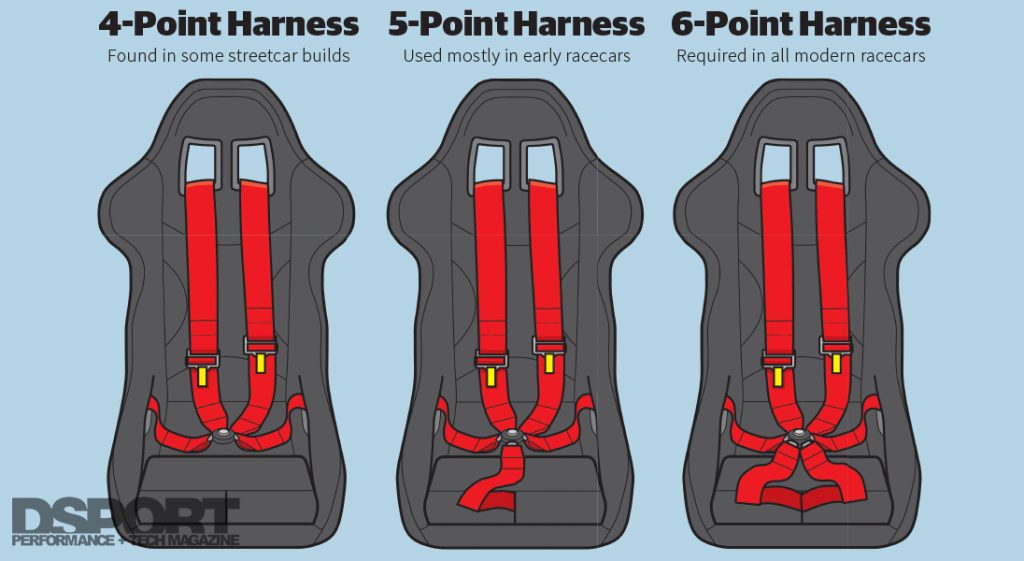 The submarine straps of the six- point harness are one of the greatest safety additions in modern restraints, preventing the driver from sliding under the lap belts.
The submarine straps of the six- point harness are one of the greatest safety additions in modern restraints, preventing the driver from sliding under the lap belts.
Strapping In
Racing restraints are useless if you aren’t strapped in properly. Before entering the racetrack, always double check that the belts are cranked down tight, sometimes at the point of some discomfort. Once you’re driving, the restraints will give up a little tension.
Safety Nets
I n the event of a serious incident where the car rolls over or other vehicles are involved, a racecar houses the driver like a safety bubble for the duration of the crash. This means that while cars move out of control in whatever direction they’re headed, nothing should enter or exit the cockpit. You may have seen recent concerns and developments in regard to driver safety in open-wheel racing series like IndyCar and Formula One, where multiple drivers have suffered injuries or even death from flying debris. Today’s helmets are extremely effective at their job, but there’s not much that you can do about a wheel, a piece of bodywork or other pieces of a car directly hitting you as you travel at over 100 MPH. The nets add an extra layer of protection in case of these types of incidents.
n the event of a serious incident where the car rolls over or other vehicles are involved, a racecar houses the driver like a safety bubble for the duration of the crash. This means that while cars move out of control in whatever direction they’re headed, nothing should enter or exit the cockpit. You may have seen recent concerns and developments in regard to driver safety in open-wheel racing series like IndyCar and Formula One, where multiple drivers have suffered injuries or even death from flying debris. Today’s helmets are extremely effective at their job, but there’s not much that you can do about a wheel, a piece of bodywork or other pieces of a car directly hitting you as you travel at over 100 MPH. The nets add an extra layer of protection in case of these types of incidents.
Companies like RaceQuip offer SFI-rated window nets for racing, complete with mounting hardware for caged racecars.
Although most enthusiast driving organizations don’t require safety nets, high performance drag racing and road racing organizations declare them mandatory. Most racing organizations require one net for the driver side window and one net between the driver and passenger seat. These tightly stitched nets prevent outside debris from entering the car, as well as contain the driver’s extremities from flailing about the cabin and outside the car. A simple YouTube search of rollover accidents on track will show how common it is for drivers’ arms to extend outside the car and risk becoming seriously injured.
The scary part about safety nets is that although they protect the driver, they add an extra barrier to get through before escaping the car. This is why proper mounting and installation is extremely important. The bottom side of the window net typically affixes to a lower locating rod or to the roll cage itself. The top of the net mounts to an upper rod with a quick release mechanism. The quick-release varies, with most manufacturers offering options for a GM-style buckle, a large push-button or a spring-loaded handle for the driver to pull back on. By quickly operating one of these methods to release the window net, the driver can lower the net and exit the car in only a few seconds.
Fire Suppression
Outside of rollovers and impacts, fire is one of the greatest safety concerns in all of motorsport. Take note that almost all safety gear and equipment in racing is labeled “flame retardant,” not “fireproof.” Once a fire starts, the primary goal is to delay its growth in order to escape, and then stop it from doing any more damage. This is because even though driver safety gear utilizes very advanced methods of fire protection, it typically can only withstand direct flames for approximately 15 seconds. Depending on the source of the fire, items like flame-retardant shift boots, seat coverings and firewall protection can make a big difference in allowing the driver time to escape.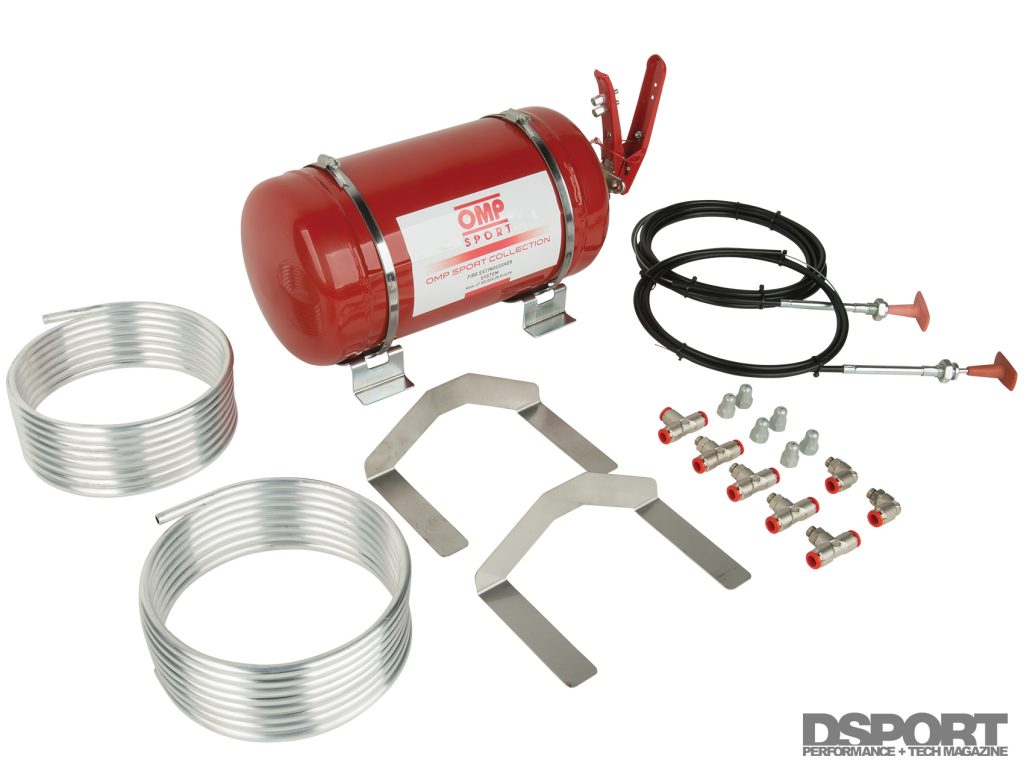
Beyond flame retardant driver gear and materials like Nomex and CarbonX in the cockpit, you can’t replace the utility of a fire extinguisher. Although not required for most track days, time trials or enthusiast drag racing events, it is highly recommended to keep a small fire extinguisher mounted in the cabin within reach of the driver. You never know when you might need access to an extinguisher for yourself or to help someone else.
Cars built for competition will likely require an onboard, SFI- and/or FIA-approved fire suppression system. This takes fire protection a step further by implementing a mounted fire bottle in the car, with metal tubing plumbed to spray extinguishing materials into essential sections of the car. At minimum, this includes a spraying nozzle in the engine bay and one facing the driver. A switch or handle that triggers the system must mount within reach of the driver as well as any safety crews reaching in from outside the car. The minimum requirement for most sanctioning bodies is a five-pound capacity, but as with anything else in safety, it doesn’t hurt to go bigger.
Expiration Dates
If you plan to compete in sanctioned events, make sure to keep track of your safety equipment’s manufacture dates. Many sanctioning bodies require items like restraints to be a maximum of five years old before requiring replacement.
Electrical
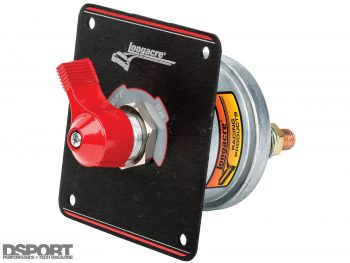 Electric shock is always possible when dealing with batteries, alternators and wires, but that isn’t the primary reason for installing a master cut-off switch. This component, also referred to as a kill switch, disables all the circuits in the car. This prevents the engine from continuing to run or a fuel pump from spraying fuel in case of an incident. Once a car crashes, the condition of the wiring, fuel and oil lines, and other potentially harmful items are a mystery until you can take the time to properly evaluate the damage. To this end, you should always shut off the car completely if you are involved in an accident. The kill switch does more than what a simple key ignition performs, by cutting the battery connection altogether. The more demanding safety regulations will often require that this switch also cut the alternator circuit, eliminating all possibility of power being delivered to any of the car’s components.
Electric shock is always possible when dealing with batteries, alternators and wires, but that isn’t the primary reason for installing a master cut-off switch. This component, also referred to as a kill switch, disables all the circuits in the car. This prevents the engine from continuing to run or a fuel pump from spraying fuel in case of an incident. Once a car crashes, the condition of the wiring, fuel and oil lines, and other potentially harmful items are a mystery until you can take the time to properly evaluate the damage. To this end, you should always shut off the car completely if you are involved in an accident. The kill switch does more than what a simple key ignition performs, by cutting the battery connection altogether. The more demanding safety regulations will often require that this switch also cut the alternator circuit, eliminating all possibility of power being delivered to any of the car’s components.
The Little Things
With the primary items filled out in the cockpit, it’s easy to forget about other ancillary safety items until you need them. For example, drivers frequently bump their head on the roll cage while on track, or when getting in and out of the car. SFI-approved roll bar padding provides a simple fix to reduce damage and wear to your helmet. While track day organizations don’t require tow straps or tow hooks like race events do, they are still strongly recommended. If your car gets stuck off track and needs to be towed off, the safety crew must pull the car out whatever way they can, even if it may cause damage to your car. In a more serious situation, a safety crew may need to pull your car out of an inaccessible area in a hurry, making proper tow points potentially life-saving. An easy-to-spot tow hook or tow loop on the front and rear of the car allows the safety crew to quickly pull your car out of an incident.
Longacre is one of the largest suppliers of safety equipment you find in racecar cockpits, not limited to the electrical kill switch and SFI-approved roll bar padding.
Inside Out
Don’t be that show car guy that dresses the interior and exterior with bogus safety equipment that can turn out to be more harmful than helpful. Items like seats and restraints, fire suppression systems and electrical cutoff switches protect you from big impacts, rollovers, various types of fires and other dangerous situations. There’s no good reason to compromise your own safety by going with cheaper or lower quality alternatives for components designed to ensure your survival. While these items in the cockpit can do a lot to protect you from many types of incidents, vehicle safety does not end here. Next time, we’ll explore the advantages and sanctioning body requirements for roll bars and roll cages in your car.


